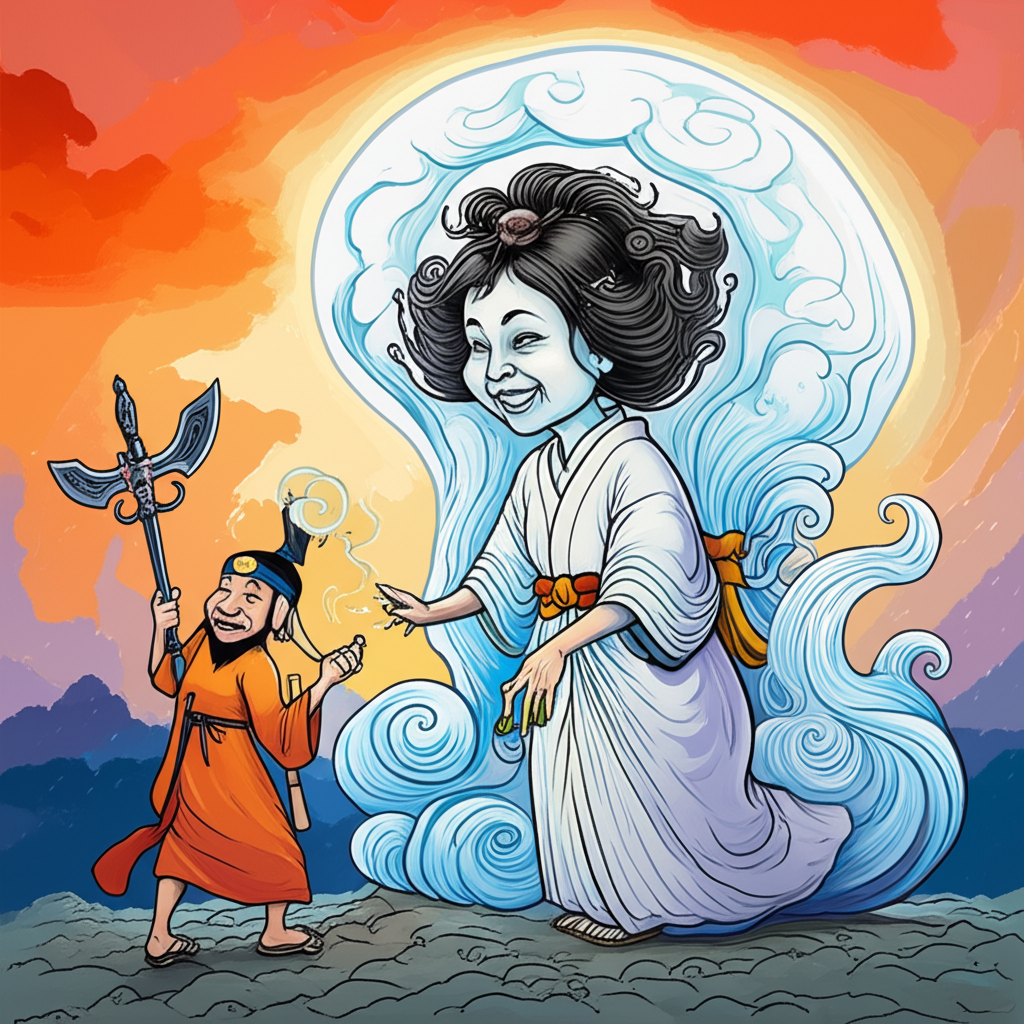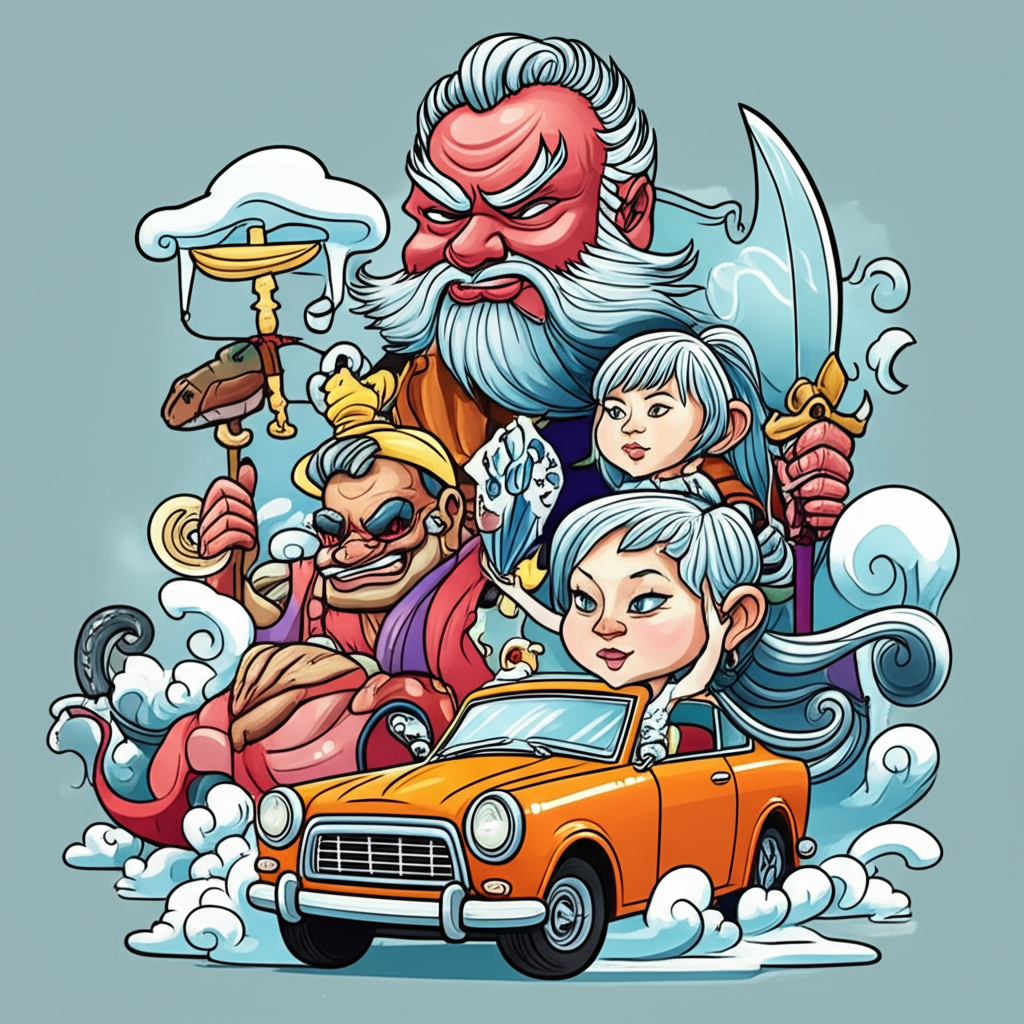
The whispers of ancient Japan, carried on the winds that once swept through Shinto shrines and across rice paddies, tell tales of a world intertwined with the divine and the spectral. Among these narratives, the concept of the kami – spirits or deities residing in nature and human affairs – and the lingering presence of the departed form a rich tapestry of belief. It is within this cultural context, a time when the veil between the seen and unseen was considered thin, that we encounter stories like that of the Yurei of Takama-ga-hara. These are not accounts of historical fact, but rather deeply ingrained folklore, passed down through generations, reflecting the worldview of ancient peoples who sought to understand the mysteries of existence.
The era in which these myths flourished was one where the natural world held immense power and awe. Communities were largely agrarian, their lives dictated by the seasons, the weather, and the bounty (or scarcity) of the land. In such a society, the actions of the kami were seen as directly influencing their fortunes. Earthquakes, storms, harvests, and the very cycle of life and death were attributed to these spiritual forces. The world was not merely a physical space but a vibrant, animate entity, populated by unseen beings whose favor or displeasure could have profound consequences. The concept of the afterlife was also a significant concern, and the fate of the soul after death was a subject of much contemplation, leading to the rich development of stories about spirits that remained tethered to the earthly realm.
Within this rich mythological landscape, the Yurei emerges as a poignant and often unsettling figure. A Yurei, in Japanese folklore, is the ghost of a deceased person, typically one who has died a violent or tragic death, or who harbors intense emotions like regret, sorrow, or anger that prevent their soul from finding peace. They are often depicted as disembodied spirits, ethereal and sorrowful, their forms translucent, their presence marked by a chilling aura. Their symbolic attributes are often tied to their earthly suffering: unbound hair, white burial kimonos (often depicted as tattered or stained), and a profound sense of longing or unfinished business. They are not deities to be worshipped, nor inherently malevolent beings to be feared in the same way as demons, but rather tragic figures caught between worlds, their existence a testament to the enduring power of human emotion and the unresolved nature of life’s final moments.
Imagine, then, a solitary traveler, perhaps a humble pilgrim or a lost scholar, venturing through the mist-laden foothills that are said to border Takama-ga-hara – the "High Heavenly Plain," the mythical dwelling place of the kami. The air grows heavy, the usual chirping of birds falls silent, and an unnatural stillness descends. The traveler, steeped in the folklore of their land, feels a prickle of unease. They are not in a physical place as we understand it, but rather a liminal space, a threshold where the earthly realm brushes against the divine and the spectral.
As the fog thins, a figure coalesces from the swirling vapor. It is a Yurei, a spectral presence, its form indistinct yet undeniably human. It appears clad in ancient, flowing white garments, its long, dark hair cascading around a face etched with an ineffable sorrow. There is no sound, no footsteps, yet it drifts closer, its translucent limbs moving with an eerie grace. The traveler, frozen by a mixture of awe and trepidation, observes the Yurei. Its eyes, though lacking physical substance, seem to fix upon the traveler, conveying a silent plea, a profound longing that transcends words. Perhaps it is a woman who died of unrequited love, her spirit forever seeking the object of her affection. Or a warrior who fell in battle, his ghost still searching for lost honor or vengeance. The Yurei does not speak, but its presence is a palpable story of suffering, a silent testament to the unresolved emotions that anchor it to this plane. The traveler feels a profound empathy, a recognition of the universal human experience of loss and regret, amplified and made spectral. The encounter is brief, a fleeting moment where the veil between worlds thins, and then, as mysteriously as it appeared, the Yurei dissolves back into the mist, leaving behind only the lingering chill and the indelible impression of a soul in torment.
To the ancient people who shared these stories, the Yurei likely represented several potent concepts. Primarily, they served as a tangible manifestation of the fear of death and the unknown fate of the soul. The concept of a spirit being unable to find rest spoke to the anxieties surrounding unresolved issues in life, the importance of living a life free of deep regret, and the need for proper burial rites and rituals to ensure a peaceful transition. Furthermore, the Yurei could symbolize the lingering power of human emotions – love, hate, grief, anger – to transcend the physical body and continue to influence the world. They might also have served as cautionary tales, subtly reminding people of the importance of fulfilling their duties, maintaining harmonious relationships, and avoiding actions that could lead to such a tormented existence.
In modern times, the Yurei has transcended its origins as a folkloric entity and has become a powerful icon in popular culture. From classic horror films like "Ringu" and "Ju-On" to contemporary anime and video games, the image of the sorrowful, vengeful ghost has captivated audiences worldwide. These interpretations often lean into the horror aspects, exploring themes of psychological terror and supernatural vengeance. However, the Yurei also continues to be a subject of academic study in fields like cultural anthropology, literature, and religious studies, offering insights into the historical beliefs, anxieties, and philosophical considerations of ancient Japanese society.
In conclusion, the encounter with the Yurei of Takama-ga-hara is a vivid illustration of the rich tapestry of Japanese mythology. It is a traditional story, a product of ancient imaginations and a reflection of their worldview. It is crucial to remember that these are narratives passed down through generations, offering a window into cultural heritage and the enduring human fascination with the mysteries of life and death. As Muslims, we hold the firm belief that only Allah (God) is the true Creator and Sustainer of all existence, and that all power and authority reside with Him alone. These stories, while culturally significant, are not to be considered divine truth or to be worshipped. Instead, they serve as a testament to the power of human storytelling, the enduring nature of our quest to understand ourselves and the world around us, and the profound beauty found in the preservation of cultural heritage and imaginative traditions.





